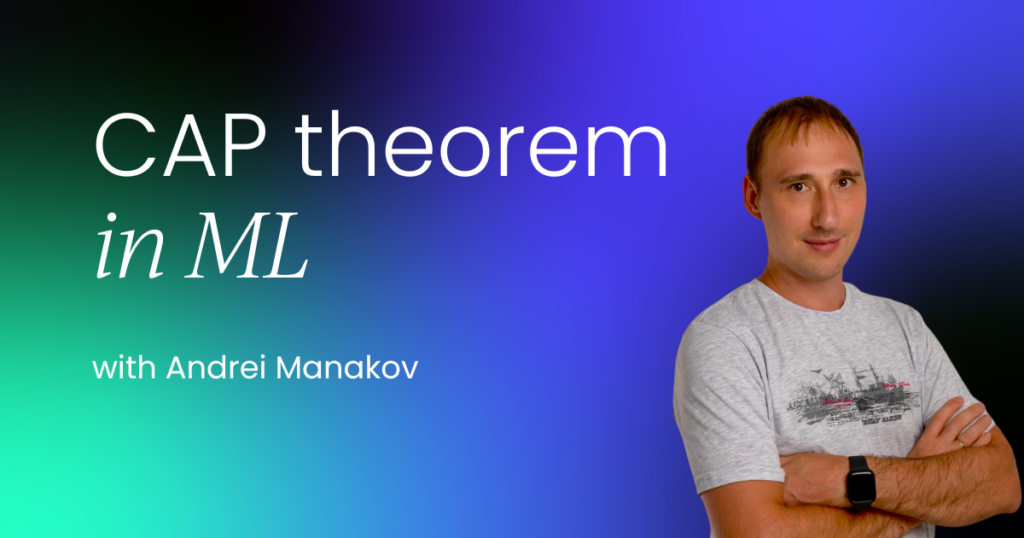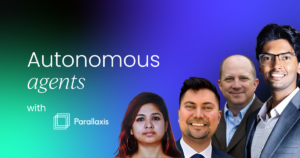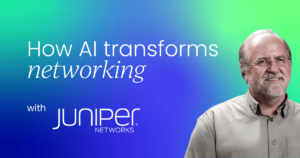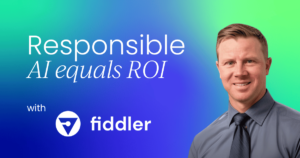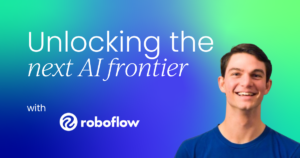The CAP theorem has long been the unavoidable reality check for distributed database architects. However, as machine learning (ML) evolves from isolated model training to complex, distributed pipelines operating in real-time, ML engineers are discovering that these same fundamental constraints also apply to their systems. What was once considered primarily a database concern has become increasingly relevant in the AI engineering landscape.
Modern ML systems span multiple nodes, process terabytes of data, and increasingly need to make predictions with sub-second latency. In this distributed reality, the trade-offs between consistency, availability, and partition tolerance aren’t academic — they’re engineering decisions that directly impact model performance, user experience, and business outcomes.
This article explores how the CAP theorem manifests in AI/ML pipelines, examining specific components where these trade-offs become critical decision points. By understanding these constraints, ML engineers can make better architectural choices that align with their specific requirements rather than fighting against fundamental distributed systems limitations.
Quick recap: What is the CAP theorem?
The CAP theorem, formulated by Eric Brewer in 2000, states that in a distributed data system, you can guarantee at most two of these three properties simultaneously:
Consistency: Every read receives the most recent write or an errorAvailability: Every request receives a non-error response (though not necessarily the most recent data)Partition tolerance: The system continues to operate despite network failures between nodes
Traditional database examples illustrate these trade-offs clearly:
CA systems: Traditional relational databases like PostgreSQL prioritize consistency and availability but struggle when network partitions occur.CP systems: Databases like HBase or MongoDB (in certain configurations) prioritize consistency over availability when partitions happen.AP systems: Cassandra and DynamoDB favor availability and partition tolerance, adopting eventual consistency models.
What’s interesting is that these same trade-offs don’t just apply to databases — they’re increasingly critical considerations in distributed ML systems, from data pipelines to model serving infrastructure.
Where the CAP theorem shows up in ML pipelines
Data ingestion and processing
The first stage where CAP trade-offs appear is in data collection and processing pipelines:
Stream processing (AP bias): Real-time data pipelines using Kafka, Kinesis, or Pulsar prioritize availability and partition tolerance. They’ll continue accepting events during network issues, but may process them out of order or duplicate them, creating consistency challenges for downstream ML systems.
Batch processing (CP bias): Traditional ETL jobs using Spark, Airflow, or similar tools prioritize consistency — each batch represents a coherent snapshot of data at processing time. However, they sacrifice availability by processing data in discrete windows rather than continuously.
This fundamental tension explains why Lambda and Kappa architectures emerged — they’re attempts to balance these CAP trade-offs by combining stream and batch approaches.
Feature Stores
Feature stores sit at the heart of modern ML systems, and they face particularly acute CAP theorem challenges.
Training-serving skew: One of the core features of feature stores is ensuring consistency between training and serving environments. However, achieving this while maintaining high availability during network partitions is extraordinarily difficult.
Consider a global feature store serving multiple regions: Do you prioritize consistency by ensuring all features are identical across regions (risking unavailability during network issues)? Or do you favor availability by allowing regions to diverge temporarily (risking inconsistent predictions)?
Model training
Distributed training introduces another domain where CAP trade-offs become evident:
Synchronous SGD (CP bias): Frameworks like distributed TensorFlow with synchronous updates prioritize consistency of parameters across workers, but can become unavailable if some workers slow down or disconnect.
Asynchronous SGD (AP bias): Allows training to continue even when some workers are unavailable but sacrifices parameter consistency, potentially affecting convergence.
Federated learning: Perhaps the clearest example of CAP in training — heavily favors partition tolerance (devices come and go) and availability (training continues regardless) at the expense of global model consistency.
Model serving
When deploying models to production, CAP trade-offs directly impact user experience:
Hot deployments vs. consistency: Rolling updates to models can lead to inconsistent predictions during deployment windows — some requests hit the old model, some the new one.
A/B testing: How do you ensure users consistently see the same model variant? This becomes a classic consistency challenge in distributed serving.
Model versioning: Immediate rollbacks vs. ensuring all servers have the exact same model version is a clear availability-consistency tension.
Case studies: CAP trade-offs in production ML systems
Real-time recommendation systems (AP bias)
E-commerce and content platforms typically favor availability and partition tolerance in their recommendation systems. If the recommendation service is momentarily unable to access the latest user interaction data due to network issues, most businesses would rather serve slightly outdated recommendations than no recommendations at all.
Netflix, for example, has explicitly designed its recommendation architecture to degrade gracefully, falling back to increasingly generic recommendations rather than failing if personalization data is unavailable.
Healthcare diagnostic systems (CP bias)
In contrast, ML systems for healthcare diagnostics typically prioritize consistency over availability. Medical diagnostic systems can’t afford to make predictions based on potentially outdated information.
A healthcare ML system might refuse to generate predictions rather than risk inconsistent results when some data sources are unavailable — a clear CP choice prioritizing safety over availability.
Edge ML for IoT devices (AP bias)
IoT deployments with on-device inference must handle frequent network partitions as devices move in and out of connectivity. These systems typically adopt AP strategies:
Locally cached models that operate independentlyAsynchronous model updates when connectivity is availableLocal data collection with eventual consistency when syncing to the cloud
Google’s Live Transcribe for hearing impairment uses this approach — the speech recognition model runs entirely on-device, prioritizing availability even when disconnected, with model updates happening eventually when connectivity is restored.
Strategies to balance CAP in ML systems
Given these constraints, how can ML engineers build systems that best navigate CAP trade-offs?
Graceful degradation
Design ML systems that can operate at varying levels of capability depending on data freshness and availability:
Fall back to simpler models when real-time features are unavailableUse confidence scores to adjust prediction behavior based on data completenessImplement tiered timeout policies for feature lookups
DoorDash’s ML platform, for example, incorporates multiple fallback layers for their delivery time prediction models — from a fully-featured real-time model to progressively simpler models based on what data is available within strict latency budgets.
Hybrid architectures
Combine approaches that make different CAP trade-offs:
Lambda architecture: Use batch processing (CP) for correctness and stream processing (AP) for recencyFeature store tiering: Store consistency-critical features differently from availability-critical onesMaterialized views: Pre-compute and cache certain feature combinations to improve availability without sacrificing consistency
Uber’s Michelangelo platform exemplifies this approach, maintaining both real-time and batch paths for feature generation and model serving.
Consistency-aware training
Build consistency challenges directly into the training process:
Train with artificially delayed or missing features to make models robust to these conditionsUse data augmentation to simulate feature inconsistency scenariosIncorporate timestamp information as explicit model inputs
Facebook’s recommendation systems are trained with awareness of feature staleness, allowing the models to adjust predictions based on the freshness of available signals.
Intelligent caching with TTLs
Implement caching policies that explicitly acknowledge the consistency-availability trade-off:
Use time-to-live (TTL) values based on feature volatilityImplement semantic caching that understands which features can tolerate stalenessAdjust cache policies dynamically based on system conditions
Design principles for CAP-aware ML systems
Understand your critical path
Not all parts of your ML system have the same CAP requirements:
Map your ML pipeline components and identify where consistency matters most vs. where availability is crucialDistinguish between features that genuinely impact predictions and those that are marginalQuantify the impact of staleness or unavailability for different data sources
Align with business requirements
The right CAP trade-offs depend entirely on your specific use case:
Revenue impact of unavailability: If ML system downtime directly impacts revenue (e.g., payment fraud detection), you might prioritize availabilityCost of inconsistency: If inconsistent predictions could cause safety issues or compliance violations, consistency might take precedenceUser expectations: Some applications (like social media) can tolerate inconsistency better than others (like banking)
Monitor and observe
Build observability that helps you understand CAP trade-offs in production:
Track feature freshness and availability as explicit metricsMeasure prediction consistency across system componentsMonitor how often fallbacks are triggered and their impact
Wondering where we’re headed next?
Our in-person event calendar is packed with opportunities to connect, learn, and collaborate with peers and industry leaders. Check out where we’ll be and join us on the road.
How the CAP theorem affects ML pipelines—what consistency and availability trade-offs mean for data ingestion, training, and model serving.

